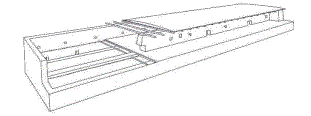« Arqueología »
HUARI ADMINISTRATIVE STRUCTURE
Prehistoric Monumental Architecture and State Government
William H. Isbell and Gordon F. Mc Ewan, Editors
1991
Dumbarton Oaks Research Library and Collection
Washington D.C.
Huari and Huamachuco
Dr. John R. Topic
TRENT UNIVERSIITY
INTRODUCTlON
This PAPER EXAMINES THE RELATIONSHIP between Huari and Huamachuco by focusing principally on four sites: Viracochapampa, Marca Huamachuco, Cerro Amaru, and Cerro Sazon. (Fig. 1). Each of these sites reveals a different facet of the relationship between Huamachuco and Huari.

Viracochapampa is a planned center whose construction has most often been considered as evidence of the Huari conquest of Huamachuco. This interpretation is based especially on the similarity of the architecture to that at other planned Huari centers. Additionally, the interpretation has sometimes been based on the perceived differences between the architecture of Viracochapampa and local Huamachuco sites, and the strategic location of Viracochapampa on the road system. The construction of Viracochapampa, however, was never completed. Since we do not have the same kinds of evidence, especially in terms of the patterning of artifacts, that are available from other Huari sites, I will give particular attention to the architectural relationships.
Marca Huamachuco is the preeminent local site. It covers approximately 2 a 4 km2 and is located high on a plateau that dominates the entire Huamachuco area. It is most famous for its monumental architecture. which includes numerous examples of multistoried buildings. Although built using a different and much more impressive masonry style than that used at Viracochapampa, the buildings at the two sites are in many ways very similar. Marca Huamachuco, however, has, more variability in the plans of its buildings. including circular and curvilinear as well as rectangular buildings. The site was founded late in the Early
The research on which this paper a based has been generously supported by the Social Sciences and Humanities Research Council of Canada. Permission to conduct field studies was granted by the Instituto Nacional de Cultura Lima. Ana Maria Hoyle of the Instituto's branch in Trujillo has assisted the project in many ways as well as serving as its inspector. I would especially like so thank the members of the Huamachuco Archaeologícal Project - consultants and students, Peruvians and North Americans-without whose excellent work and gracious cooperation the fieldwork would never have been done. The project is codirected by Theresa Lange Topic. and her contributions both in and out of the field have always been crucial to its success. Finally, I would like to thank the people of Huamachuco for welcoming us into their town and ruins.
Intermediate Period and occupied continuously throughout the Middle Horizon.Cerro Amaru located just below Marca Huamachuco, was also founded in the Early Intermediate Period but may not have been continuously occupied throughout the Middle Horizon. It was most likely a shrine whose importance was related to water and fertility. There are three wells located at the highest part of the Site. and one of these contained thousands of stone and shell beads (McCown 1945: 304-305). There is also some toponymic evidence for an association with Upay Huachac, a legendary woman associated with water and fish. Cerro Amaru is the only site in the area with appreciable concentrations of Huary pottery; architecture, however, is poorly preserved.
Cerro Sazon is located near Viracochapampa and was probably served by the same road. It is about the same size as Viracochapampa but has a much denser occupation. This site was also founded during the Early Intermediate Period, but large sections appear to have been burnt during the Middle Horizon. Some sections of the site were probably reoccupied late in the Middle Horizon, which involved the construction of a few large buildings. Although most of the architecture is poorly preserved, it is clear that the plans of buildings are similar to both Marca Huamachuco and Viracochapampa; the masonry style, however. is purely Huamachuco.
This paper reviews the evidence from these sites in more detail. Viracochapampa is described at length and compared to other Huarí sites as well as to the local Huamachuco sites. The Huamachuco sites will be examined in terms of their dating, the architectural variation, and evidence of interaction with Huari as well as with other foreign cultures. The interpretation that emerges recognizes a multifaceted relationship between Huari and Huamachuco that may involve some coercion on both sides as well as ideological interaction and trade.
 Retornar
Avanzar
Retornar
Avanzar